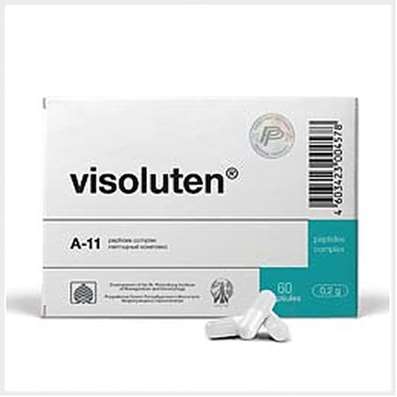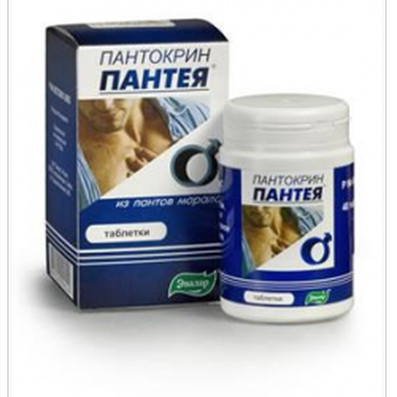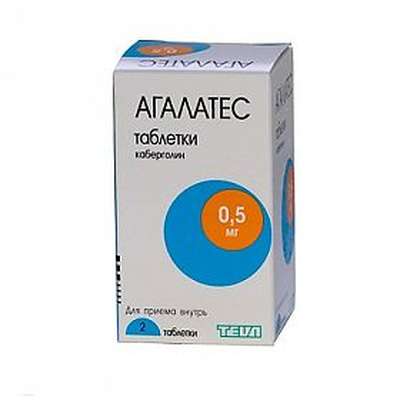Instruction for use: Dexason
I want this, give me price
Active substance: Dexamethasone
ATX Code H02AB02 Dexamethasone
Pharmacological group
Glucocorticosteroid
The nosological classification (ICD-10)
A41.9 Septicemia, unspecified
Septic diseases, Septicemia / bacteremia, Toxico-infectious shock, Endotoxin shock, Bacterial septicemia, Bacterial infections of severe course, Generalized infections, Generalized systemic infections, Infections generalized, Wound sepsis, Septiccopymia, Septic-toxic complications, Septicemia, Septic conditions, Septic shock, Septic condition, Septic shock
C81-C96 Malignant neoplasms of lymphoid, hematopoietic and related tissues
Hematoblastosis, Hematosarcoma, Leukemia, Lymphoma of the malignant, Tumors of the lymphoid, hematopoietic and related tissues
C85 Other and unspecified types of non-Hodgkin's lymphoma
Lymphoma of mixed type, Lymphomas from cells of the mantle zone, Malignant lymphoma, Lymphoma non-Hodgkin's disease, Lymphocytic lymphoma
C95 Leukemia of unspecified cell type
Acute non-lymphocytic leukemia, Leukemia undifferentiated, Undifferentiated leukemia, Non-lymphocytic leukemia, Acute leukemia in adults, Non-lymphocytic leukemia
D55-D59 Hemolytic anemia
D64 Other anemia
Erythrocyte anemia, Erythroid hypoplastic anemia, Anemia due to erythropoietin deficiency, Anemia in metabolic disorders of erythrocytes, Anemia, Autoimmune anemia, Idiopathic anemia
D69.3 Idiopathic thrombocytopenic purpura
Werlhof's disease, Idiopathic autoimmune thrombocytopenia, Idiopathic thrombocytopenic purpura of adults, Idiopathic thrombocytopenic purpura in adults, Immune idiopathic thrombocytopenic purpura, Immune thrombocytopenia, Bleeding in patients with thrombocytopenic purpura, Evans Syndrome, Thrombocytopenic purpura, Thrombocytopenia of immune origin, Chronic idiopathic thrombocytopenic purpura, Essential thrombocytopenia, Autoimmune thrombocytopenic purpura in pregnancy, Posttransfusion purpura
D70 Agranulocytosis
Agranulocytosis is hereditary, Aleicia, Aleykocytosis, Agranulocytic angina, Angina agranulocytic, Primary cytopenia
E06 Thyroiditis
Pulmonary thyroiditis
E27.4 Other and unspecified adrenocortical insufficiency
Hypocorticism, Hypoaldosteronism, Adrenal insufficiency, Insufficiency of the adrenal cortex, Insufficiency of the adrenal cortex, Secondary adrenocortical insufficiency, Secondary adrenal insufficiency, Secondary insufficiency of the adrenal cortex, Temporary decrease in the function of the adrenal cortex, Dysfunction of the adrenal cortex
E83.5.0 * Hypercalcemia
Hypercalcemic crisis, Idiopathic hypercalcemia of newborns, Milk-alkaline syndrome
G00 Bacterial meningitis, not elsewhere classified
Meningitis, Meningeal infections, Meningitis of bacterial etiology, Pachymeningitis external, Epiduritis purulent
G04 Encephalitis, myelitis and encephalomyelitis
Disseminated acute encephalomyelitis, Leukoencephalitis, Meningomielitis, Myelitis, Acute encephalitis, Acute encephalomyelitis, Chronic encephalitis, Chronic encephalomyelitis, Encephalitis, Encephalomyelitis, Inflammation of meninges
G93.6 Edema of the brain
Intraoperative cerebral edema, Cerebral edema, Post-traumatic swelling of the brain, Brain edema associated with radiation therapy, Brain edema associated with head trauma, Post-traumatic cerebral edema, Edema of the brain in poisoning
H01.0 Blepharitis
Blepharitis, Inflammation of the eyelids, Inflammatory diseases of the eyelids, Demodectic blepharitis, Superficial bacterial infection of the eyes, Superficial infection of the eye, Scaly blepharitis
H10.1 Acute atopic conjunctivitis
Allergic conjunctivitis, Allergic eye disease, Allergic conjunctivitis, Allergic conjunctivitis is caused by chemical and physical factors, Allergic rhinoconjunctivitis,Allergic inflammation of the eye, Spring catarrh, Spring keratitis, Spring conjunctivitis, allergic Conjunctivitis, Perennial allergic conjunctivitis,Exacerbation of pollen allergy in the form of Syndrome rinokonyunktivalnogo, Acute allergic keratoconjunctivitis, Acute allergic conjunctivitis,Superficial bacterial eye infections,rhinoconjunctivitis, Seasonal allergic conjunctivitis, Seasonal conjunctivitis, Sennoz, Chronic allergic keratoconjunctivitis, Chronic allergic conjunctivitis
H10.5 blepharoconjunctivitis
Chronic blepharoconjunctivitis, blepharoconjunctivitis, stafillokokk blepharoconjunctivitis
H15.0 Sclerite
Acute scleritis, Chronic scleritis, Diffuse scleritis, Sclerite
H15.1 Episcleritis
Acute episcleritis, Chronic episcleritis
H16 Keratitis
Adenoviral keratitis, Bacterial keratitis, Spring keratitis, Deep keratitis without epithelial damage, Discoid keratitis, Dendritic keratitis, Keratitis rosacea, Keratitis with destruction of the cornea, Superficial keratitis, Point keratitis, Traumatic keratitis, Superficial point keratitis
H16.2 Keratoconjunctivitis
Chronic allergic keratoconjunctivitis, Bacterial keratoconjunctivitis, Deep forms of adenovirus keratoconjunctivitis, Infectious conjunctivitis and keratoconjunctivitis caused by Chlamydia trachomatis, Acute allergic keratoconjunctivitis, Spring keratoconjunctivitis, Phlyctenular keratoconjunctivitis
H20 Iridocyclitis
recurrent iritis, sympathetic iridocyclitis, Sluggish posterior uveitis, Sluggish posterior uveitis, Posterior uveitis, the posterior segment of the eye Iridocyclitis, Iridocyclitis and other uveitis, Irit, Keratoiridotsiklit, Acute iritis, uveitis, cycle of Acute iridocyclitis, Acute non-infectious uveitis
H44.1 Other endophthalmitis
Ophthalmic sympathetic, Egyptian ophthalmia,Endophthalmitis
I00 Rheumatic fever without mention of cardiac involvement
Acute rheumatism, Rheumatic arthritis acute, Rheumatism is active, Rheumatic fever, Acute attack of rheumatic joint disease
I61 Intracerebral haemorrhage
Apoplexic shock, Apoplexy of the brain, Hematoma subduralnoy, Hematoma epidural, Hemorrhagic stroke, Stroke apoplexy, Hemorrhagic stroke, Hemorrhage in the brain, Intra cerebral hemorrhage, Postponed hemorrhagic stroke, Subdural hematoma chronic, Epidural hematomas
J41 Simple and mucopurulent chronic bronchitis
Disease of the bronchi, Purulent bronchitis, Chronic purulent-obstructive bronchitis, Chronic purulent bronchitis
J44.8 Other specified chronic obstructive pulmonary disease
Chronic emphysema bronchitis
J45 Asthma
Asthma physical effort, status asthmaticus, Bronchial asthma, Asthma lung flow, Bronchial asthma with obstruction of sputum discharge, Bronchial asthma heavy currents, Bronchial asthma physical effort, hypersecretory asthma, Hormone-dependent form of bronchial asthma, Relief of asthma attacks in bronchial asthma, Non-allergic asthma, nocturnal asthma, Exacerbation of asthma, Asthma attacks, Endogenous forms of asthma, Night asthma, Cough with bronchial asthma
J46 Status asthmaticus
Asthmatic attack, status asthmaticus, Bronchospasm in bronchial asthma
J98.8.0 * Bronchospasm
Bronchospasm in bronchial asthma, Bronchospasm when exposed to an allergen, bronchospastic reactions, bronchospastic status, bronhospastichesky syndrome, Diseases accompanied by bronchospastic syndrome, reversible bronchospasm, spasmodic cough
L20 Atopic dermatitis
Itchy atopic eczema, Common neurodermatitis, Allergic skin diseases, Allergic skin diseases of non-infectious etiology, Allergic skin diseases of non-microbial etiology, Allergic skin diseases, Allergic skin lesions, Allergic manifestations on the skin, Allergic dermatitis, Allergic diathesis, Allergic itching dermatosis, Allergic Skin Disease, Allergic skin irritation, Dermatitis allergic, Atopic dermatitis, Dermatosis allergic, Diathesis exudative, Skin Allergic Disease, Skin allergic reaction to medicinal and chemical preparations, Skin reaction to medication, Skin and allergic disease, Acute eczema, Chronic atopic dermatitis, Exudative diathesis, Itching allergic dermatosis
L26 Exfoliative dermatitis
Dermatitis exfoliative, Exfoliative dermatitis generalized
L58 Radiation dermatitis radiation
Radiation injury of the skin, Radiation skin lesions, Radiation damage to the skin and mucous membranes, Skin lesion with radiation therapy, Irritation after exposure to X-rays, Radiation damage to the skin, Radio-epileleitis, Radiation acute syndrome
L91.0 Keloid cicatrix
Hyperlusculation, Keloid, Keloid cicatrix, Kelloid scars
L92.0 Granuloma annular
Ring-shaped granuloma
L93.0 Discoid lupus erythematosus
Chronic discoid lupus erythematosus, Red discoid lupus, Discoid lupus, Discoid erythematosis
L94.0 Localized scleroderma [morphea]
Scleroderma limited, Systemic scleroderma, Cutaneous scleroderma, Teardrop scleroderma, Limited scleroderma, Focal scleroderma
M06.9 Other specified rheumatoid arthritis
Rheumatoid arthritis,Pain syndrome in rheumatic diseases, Pain in rheumatoid arthritis, Inflammation in rheumatoid arthritis, Degenerative forms of rheumatoid arthritis, Children's rheumatoid arthritis, Exacerbation of rheumatoid arthritis, Acute articular rheumatism, Rheumatic arthritis, Rheumatic polyarthritis, Rheumatoid arthritis, Rheumatic polyarthritis, Rheumatoid arthritis, Rheumatoid arthritis of active course, Rheumatoid arthritis, Rheumatoid polyarthritis, Acute rheumatoid arthritis, Acute rheumatism
M13.9 Arthritis, unspecified
Arthritis,Purulent arthritis (non-infectious), acute Arthritis,Pain in acute inflammatory diseases of the musculoskeletal system,Pain in chronic inflammatory diseases of the musculoskeletal system,The pain in osteoarthritis, Inflammation in osteoarthritis, Inflammatory arthropathy, Inflammatory and degenerative joint diseases, Inflammatory disease of the musculoskeletal system, Inflammatory joint disease, Inflammatory diseases of the musculoskeletal system, destructive arthritis, The disease of the musculoskeletal system, Diseases of the musculoskeletal system, Diseases of the musculoskeletal system and connective tissue, Infections musculoskeletal system, monoartrit, Non-infectious arthritis, rheumatic arthritis, Osteoarthritis, Acute inflammation of the musculoskeletal tissue, Acute inflammatory diseases of the musculoskeletal system, Acute inflammatory condition of the musculoskeletal system, Acute arthritis, Acute osteoarthritis, Post-traumatic osteoarthritis, Reactive arthritis, Chronic inflammatory diseases of the joints, Chronic arthritis, Chronic inflammatory arthritis, Chronic inflammation of the inner layer of the joint capsule, Chronic inflammation of the joint capsule,Chronic inflammatory disease of the joints, Exudative arthritis
M15-M19 Osteoarthritis
M32 Systemic lupus erythematosus
Lupus erythematosus red disseminated, Disseminated lupus erythematosus, Chronic lupus erythematosus
M35 Other systemic involvement of connective tissue
M65 Synovitis and tendosynovitis
Acute tenosynovitis, Tendovaginitis (tenovaginitis), Tendosinovit (tenosynovitis), Tendovaginitis, Osteoarthritis in musculo-articular diseases, Inflammatory disease of soft tissues, Nonspecific tenosynovitis, Tendosinovit
M71 Other bursopathies
Bursitis, Bursopathy, Diseases of soft tissues, Osteoarthritis in musculo-articular diseases, Inflammatory disease of soft tissues, Subacute bursitis
M77.0 Medial epicondylitis
Epicondylitis medial, Epicondylitis, Epicondylitis traumatic medial
M77.1 Lateral epicondylitis
Epicondylitis lateral, Epicondylitis, Epicondylitis traumatic lateral
M79.0 Other unspecified rheumatism
Degenerative rheumatic disease, Degenerative and rheumatic diseases of the tendons, Degenerative rheumatic diseases, Localized forms of rheumatism of soft tissues, Rheumatism, Rheumatism with a pronounced allergic component, Rheumatism of the articular and extraarticular, Rheumatic attack, Rheumatic complaints, Rheumatic diseases, Rheumatic disease of the spine, Relapses of rheumatism, Articular and extra-articular rheumatism, Articular and muscular rheumatism, Articular rheumatism, Articular syndrome with rheumatism, Chronic rheumatic pain, Chronic articular rheumatism, Rheumatoid diseases, Rheumatic diseases of the intervertebral disc
R57 Shock, not elsewhere classified
Obstructive shock
S06 Intracranial injury
Traumatic brain injury, Traumatic brain injury with a predominantly stem lesion level, Condition after traumatic brain injury,Brain Injury, skull Injuries, brain injury, Brain Contusion, Craniocerebral trauma, Traumatic brain injury,TBI, traumatic brain injury, The traumas of head injury, The consequence of traumatic brain injury, The consequence of TBI, Cranial trauma, Traumatic brain injury, Traumatic encephalasthenia, concussion
T66 Unspecified radiation effects
Radiation Disease, Diarrhea radiation, Gastrointestinal syndrome with irradiation, Radiation sickness, Radiation disorders of mucous membranes, Irradiation chronic, Osteoradionecrosis, Acute radiation sickness, Acute and chronic radiation injuries, Acute radiation syndrome with radiation therapy, Subacute and chronic radiation sickness, Radiation Neuropathy, Radiation edema, Radiation damage to the nervous system, Radiation immunodeficiency, Radiation syndrome, Radio-epileleitis, Radiation acute syndrome, State after irradiation, Cytopenia due to previous radiation or chemotherapy, Cytopenia radiation, Cytopenia due to radiation therapy, Cytopenia due to chemotherapy
T78.2 Anaphylactic shock, unspecified
Anaphylactic shock, Anaphylactoid reaction, Anaphylactic shock, Anaphylactic reactions, Anaphylactic shock to drugs
T78.4 Allergy, unspecified
Allergic reactions to insulin, Allergic reactions to insect stings, Allergic reactions similar to systemic lupus erythematosus, Allergic diseases, Allergic diseases of mucous membranes, Allergic diseases and conditions resulting from increased release of histamine, Allergic diseases of mucous membranes, Allergic symptoms, Allergic symptoms in the mucous membranes, Allergic reactions, Allergic reactions caused by insect bites, Allergic reactions, Allergic conditions, Allergic laryngeal edema, allergopathy, allergic conditions, Allergy, House dust allergy, Anaphylaxis, Cutaneous reactions to medications, Skin reaction to insect stings, Cosmetic allergy, Drug allergy, Acute allergic reaction, Laryngeal edema allergic genesis and background radiation, Food and drug allergy
T79.4 Traumatic shock
Hemorrhagic shock, Crush syndrome, hemorrhagic shock, postoperative shock, post-traumatic shock, traumatic shock, hemorrhagic shock and encephalopathy syndrome
T80.5 Anaphylactic shock associated with the administration of serum
T90.4 Consequences of trauma to the eye, near-orbital area
Composition and form of release
Solution for injection 1 ml
Dexamethasone sodium phosphate 4 mg
Auxiliary substances: glycerol; Sodium edetate; Sodium hydroxide; Phosphoric acid; Methylhydroxybenzoate; Propylhydroxybenzoate; water for injections
In ampoules of 1 ml; In the planar cell package 5 ampoules; In a pack of cardboard 5 packages.
Tablets 1 table.
Dexamethasone 0.5 mg
In polypropylene bottles of 50 pcs .; In a pack of cardboard 1 bottle.
Characteristic
Synthetic glucocorticoid, a derivative of prednisolone.
Indications
Acute insufficiency of the adrenal cortex, primary and secondary adrenal insufficiency, adrenogenital syndrome, subacute thyroiditis, hypercalcemia in malignant neoplasms, bronchial asthma, rheumatoid arthritis in the exacerbation phase, connective tissue and skin diseases, shock resistant to standard therapy, anaphylactic shock; Cerebral edema (with a brain tumor, craniocerebral trauma, neurosurgical intervention, cerebral hemorrhage, encephalitis, meningitis, radiation injury); Asthmatic status, severe bronchospasm (exacerbation of bronchial asthma, chronic obstructive bronchitis); Severe allergic reactions; Rheumatic diseases, systemic connective tissue diseases, acute severe dermatoses; Malignant diseases (palliative treatment of leukemia and lymphoma in adults, acute leukemia in children, hypercalcemia in patients with malignant tumors); Carrying out of test at differential diagnostics of a hyperplasia and tumors of a cortex of adrenals; Acute hemolytic anemia, agranulocytosis, idiopathic thrombocytopenic purpura in adults; Severe infectious diseases (in combination with antibiotics); Allergic conjunctivitis, keratitis, keratoconjunctivitis without epithelial damage, irit, iridocyclitis, blepharitis, blepharoconjunctivitis, scleritis, episcleritis, inflammatory process after eye trauma and surgical interventions, sympathetic ophthalmia, immunosuppressive therapy after corneal transplantation (subconjunctival, retrobulbar or parabulbar injection); Arthritis of various etiologies, osteoarthritis, acute and subacute bursitis, acute tendovaginitis, epicondylitis, synovitis (intraarticular and intrasynovial administration); Keloids, discoid lupus erythematosus, annular granuloma (local application).
Contraindications
Increased individual sensitivity to the drug, systemic mycoses, severe osteoporosis, severe myopathies (with the exception of myasthenia gravis), viral infections, poliomyelitis (with the exception of the bulbar-encephalic form), lymphadenitis after vaccination with BCG, idiopathic thrombocytopenic purpura (with IM injection) Infectious lesions of joints and periarticular tissues.
pregnancy and lactation
During pregnancy (especially in the first trimester) the drug can be applied only when the expected therapeutic effect exceeds the potential risk to the fetus. With prolonged therapy during pregnancy, the possibility of impaired fetal growth is not ruled out. In case of application at the end of pregnancy there is a risk of atrophy of the adrenal cortex in the fetus, which may require replacement therapy in the newborn. If treatment is necessary during breastfeeding, breast-feeding should be discontinued.
Side effects
The risk of side effects increases with the duration of the course of treatment.
On the part of metabolism: sodium and water retention, hypokalemia, hypokalemic alkalosis, negative nitrogen balance, caused by increased protein catabolism.
From the cardiovascular system and blood (hematopoiesis, hemostasis): a higher risk of thrombus formation (especially in immobilized patients), arterial hypertension, congestive heart failure in patients with heart disease.
From the musculoskeletal system: muscle weakness, steroid myopathy, muscle mass reduction, osteoporosis, compression fractures of the vertebrae, aseptic necrosis of the head of the femoral and humerus bones, pathological fractures of long bones.
On the part of the gastrointestinal tract (gastrointestinal tract): erosive and ulcerative lesions of the gastrointestinal tract (which can be the cause of perforations and bleeding), pancreatitis, ulcerative esophagitis.
From the skin: thinning and vulnerable skin, petechiae and subcutaneous hemorrhages, ecchymosis, striae, steroid acne, delayed healing of wounds, increased sweating.
From the nervous system and sensory organs: dizziness, headaches, mental disorders, convulsions and false symptoms of a brain tumor (increased intracranial pressure with a congestive optic nerve disc).
On the part of the endocrine system: menstrual irregularities, Itenko-Cushing syndrome, growth retardation in children, a decrease in glucose tolerance, hyperglycemia up to the development of steroid diabetes, an increase in the need for insulin or oral antidiabetics in patients with diabetes mellitus, adrenal insufficiency (especially in Time of stress - with trauma, surgical operations, concomitant diseases).
From the side of the organ of vision: posterior subcapsular cataract, increased intraocular pressure, exophthalmos.
Associated with immunosuppressive action: more frequent occurrence of infections and aggravation of the severity of their course.
Other: allergic reactions.
Local reactions (at the injection site): hyperpigmentation and leukoderma, subcutaneous fat and skin atrophy, aseptic abscess, hyperemia at the injection site, arthropathy.
Interaction
Simultaneous use with phenobarbital, rifampicin, phenytoin or ephedrine can accelerate biotransformation and weaken the effect of the drug. Hormonal contraceptives enhance the action of Dexason. Simultaneous use with diuretics (especially loop) can lead to increased excretion of potassium. With simultaneous use with cardiac glycosides, the possibility of cardiac arrhythmias increases. Weaken (less intensifies) the effect of coumarin derivatives, which requires correction of their dose. Strengthens the side effect of NSAIDs (nonsteroidal anti-inflammatory drugs), especially the effect on the gastrointestinal tract (increased risk of erosive ulcerative lesions and bleeding from the gastrointestinal tract). In addition, it reduces the concentration of NSAIDs in the serum and their effectiveness.
Dosing and Administration
In / in (intravenously), intramuscularly , intraarticularly, intrasynovially, locally (in pathological formation), inside. In acute and urgent conditions, the drug is injected intravenously slowly or driply.
The average daily intake for adults is 2-3 to 6 mg. The maximum daily dose is 10-15 mg, divided into 3 doses. The duration of parenteral treatment is 3-4 days. Then they switch to maintenance therapy with an oral form. After achieving the therapeutic effect, the dose is gradually reduced to 2-4.5 mg / day. Children are prescribed 0.083-0.333 mg / kg or 0.0025-0.0001 mg / m2 in 3-4 divided doses, depending on the age. Treatment is stopped gradually.
Overdose
Symptoms: may increase the side effects (it is necessary to reduce the dose or cancel the drug).
Treatment: symptomatic.
Precautionary measures
With extreme caution should be used with ulcerative colitis, if there is a threat of perforation; With diverticulitis of the intestine; Newly created intestinal anastomosis; With peptic ulcer; Renal failure; AIDS; With arterial hypertension; Diabetes mellitus; Osteoporosis; Myasthenia gravis; Glaucoma; With mental illness in the anamnesis; In children.
During treatment with Dexason, it is necessary to observe the oculist, control AD, peripheral blood and glycemia.
The effect of the drug is increased in patients with hypothyroidism and liver cirrhosis. Can mask the symptoms of infection. Can enhance existing emotional instability or psychotic disorders. In connection with the occurrence of anaphylactic reactions during parenteral therapy, appropriate precautions should be taken before the administration of the drug (especially in patients with a tendency to drug allergy).
In stressful situations during maintenance treatment (for example, surgical operations, trauma or infectious diseases), a correction of the dose of the drug should be made in connection with an increase in the need for glucocorticosteroids.
With long-term treatment should discuss the appropriateness of the transition from parenteral to oral administration. Long-term use of high doses of the drug requires a gradual dose reduction in order to prevent the development of acute adrenocortical insufficiency. It should be carefully monitored for patients within a year after the end of long-term therapy with glucocorticosteroids in connection with the possible development of a relative insufficiency of the adrenal cortex in a stressful situation.
During treatment with glucocorticosteroids, vaccination should not be given due to a decrease in its effectiveness and possible neurological complications. Dexason is not prescribed for 8 weeks before and 2 weeks after vaccination.
If side effects occur on the part of the CNS (central nervous system) (see "Side effects"), work with mechanisms and management of vehicles should be discontinued.
storage conditions
At a temperature of 15-30 ° C.
Keep out of the reach of children.
Shelf Life
Solution for intravenous and intramuscular injection of 4 mg / ml - 3 years.
Tablets 0.5 mg - 5 years.
Do not use after the expiry date printed on the package.

 Cart
Cart





